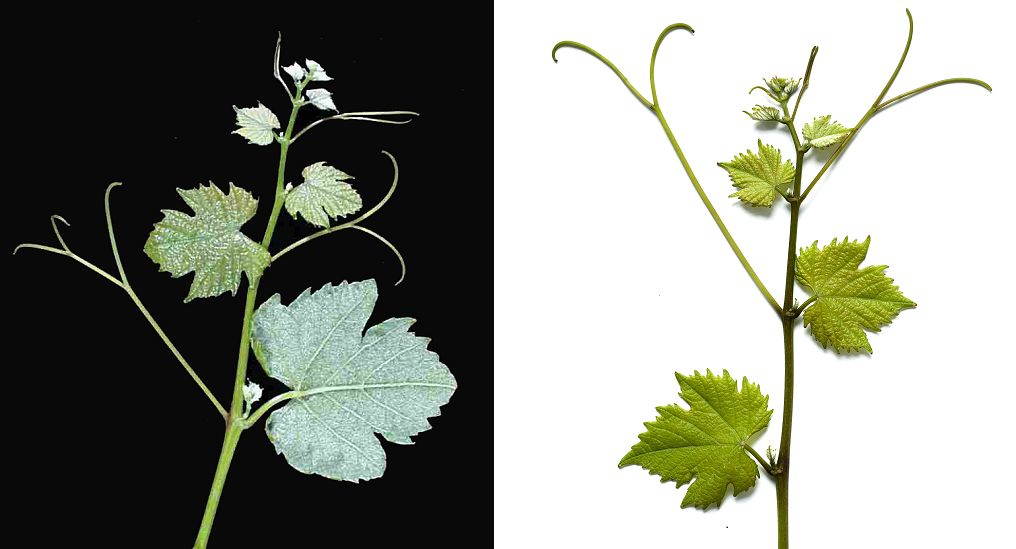The white grape variety originates from Germany or Switzerland. Synonyms are Bitterer, Förderer, Förderling, Förterer, Füllering, Fünderling, Fürder, Fürderling, Fütterling, Fürterer, Fürterling, Fürther, Heubacher, Kleiner Räuschling, Miesenvaiter, Missethäter, Visitator, Vitterer, Weißer Fütterer, Wiesentaiter, Wiesenthaider, Wiesentheer, Wiesetheider, Wiesetriter and Wisenhader. According to DNA analyses carried out in 2013, it is a presumably natural cross between Weißer Heunisch (Gouais Blanc) x Savagnin (Traminer). However, this is based on only 20 DNA markers (see Molecular Genetics). The Fütterer is one of the oldest varieties in Central Europe. In 1650 it was mentioned in the posthumously published work "Historia Plantarum Universalis" by the Swiss botanist Johannes Bauhin (1541-1613).

It was introduced to Württemberg from western Switzerland at the end of the Middle Ages under the name "Lausanois". There it was an integral part of the mixed vineyard for centuries and was one of the best landraces. Johann Metzger (1789-1852) described the Fütterer in 1827, saying that it ripened together with the Riesling and that its juice tasted sweet and pleasant. In 1860, Christian Single (1816-1869) raved about its distinctive bouquet, which is still evident in the wines of Silvaner, Elbling or Gutedel, even with only a 20% blend. Other advantages are its resistance to flowering and its insensitivity to winter and spring frosts. One of the synonyms of the ancient French variety Folle Blanche is Fütterer, the two varieties also have similarities. Therefore, a relationship has often been suspected. However, they are two separate varieties, which, by the way, Victor Pulliat (1827-1896) noted as early as 1852.
The Fütterer vine, long thought to be extinct, was rediscovered in 2005 in the Steinberg vineyard in Heidelberg (Baden ) together with the varieties Bettlertraube (Žametovka), Blauer Elbling, Weißer und Roter Heunisch, Putzscheere, Silvaner, Riesling and Trollinger in an old vineyard (information from the vine researcher Andreas Jung). At first glance, it resembles a virgin Riesling, which was probably the reason for its disappearance in the century of clonal selection. However, the berries are not round, but roundish-oval, from which one can quickly recognise the difference to Riesling. Phenotypically, it most closely resembles the Sémillon variety, but has smaller grapes. It is probably a natural cross between Heunisch (Gouais Blanc) and Traminer and belongs to the group of Franconian varieties of the Middle Ages. The three varieties Aubin Blanc, Petit Meslier and Räuschling come from the same parentage.
Whether it originated in the historical Kingdom of Burgundy (existed from the 5th to the 9th century) on the western edge of the Alps, or was imported directly from the Kingdom of Hungary like many other varieties of the County of Savoy, can probably no longer be clarified with certainty. The reliable re-identification of varieties that have already disappeared is always difficult when live specimens are no longer available as a reference. Fortunately, an illustration of the feeder exists in the Variety Atlas by Lambert J. L. Babo (1790-1862) and Johann Metzger (1789-1852). Both descriptions and pictures fit very well with the characteristics of the rediscovered plants, so it can be assumed that the seven vines there represent the last specimens of the historic variety. The feeder was included in the national programme for the long-term conservation of old Swiss varieties. However, no stocks were reported in 2016 (Kym Anderson statistics).
Source: with kind permission of the author Andreas Jung
Voices of our members

The glossary is a monumental achievement and one of the most important contributions to wine knowledge. Of all the encyclopaedias I use on the subject of wine, it is by far the most important. That was the case ten years ago and it hasn't changed since.
Andreas Essl
Autor, Modena